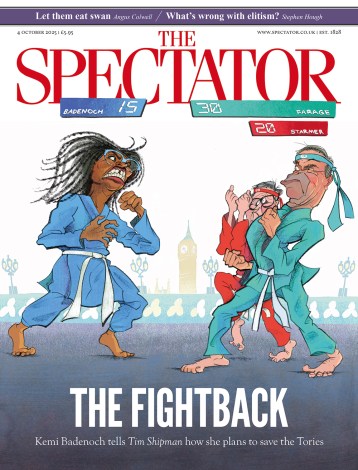It is not surprising that Edward Hopper (1882–1967) is an immensely popular artist. His pleasing deployment of colour and easy-going presentation of the paraphernalia of everyday life give his work an immediate warmth and likeability. His muted palette, careful modulation of hues, and soft-edged precision are a recipe for visual charm. Considered simply as aesthetic objects, Hopper’s pictures make few demands: they are, on the contrary, quietly inveigling, almost seductive in their plain-as-day obviousness. And if we’ve never seen diners or drugstores or city streets exactly like the ones that Hopper paints, we’ve seen ones that remind us of them — or vice versa. Hopper seems to give us the very essence of Diner, the graven reality of Pharmacy or Automat, his stylisation communicating an intense period feel that also seems universal, placeless, torn somehow out of time.
Hopper grew up in Nyack, New York, overlooking the Hudson River, and the views from those windows of reflected sunlight formed an indelible library of impressions that served Hopper ever after. From 1900 to 1905 he studied at the New York School of Art, where Robert Henri, doyen of the Ash Can School, and the American impressionist William Merritt Chase were particularly important influences, imparting, in Henri’s case, a fresh involvement with the quotidian realities of urban life, and in Chase’s the seductive lure of visual decorousness. During these student years Hopper made three trips to Paris where he tried on for size and then largely discarded that species of urban weariness and sophistication. Early paintings like ‘Soir Bleu’ (1914) show Hopper conjuring — and conjuring adroitly — with Manet, but such paintings are merely by Hopper, not of Hopper.
It took him until the middle 1920s to effect that metamorphosis. Some hints of the maturation can be found in his bravura watercolours from the period — lighthouses in Maine, rooftops in Gloucester, Massachusetts, city scenes in New York. These eager domestic excursions are slightly stagy but astringently fastidious. Indeed, everything about the six-foot-five artist was fastidious: his dress, his personal manner, his art. At some point in the 1920s, he managed the trick of endowing that fastidiousness with hints of unplumbable mystery.
Once he hit his artistic stride, Hopper consistently insinuated an element of existential melancholy, a dollop of unanswerable loneliness into his pictures. His shadows are long, his views foreshortened, his figures as mute as they are blunt and unarticulated. Hopper’s emotional range is narrow — it seldom wanders from these pools of quiet resignation — but utterly distinctive. The ‘Hopperesque’ is that visual encapsulation of slightly morbid dissatisfaction, never sharp enough to blossom into anguish or even overt definition, but likewise never susceptible of human remedy. You can instantly recognise it at 50 paces: an unmistakable amalgam of pensive moods and atmospheres.
Both elements — the prettiness and the pensiveness — undergird Hopper’s popularity, the former making him accessible and aesthetically reassuring, the latter injecting his work with the appurtenances of depth and existential gravity.
It is not everyone’s cup of tea. When I saw this show in Boston, I overheard a young man complaining that ‘not one person in these pictures is happy’. This is true. But it is also beside the point. Or, rather, it is exactly the point: that failure to connect, that enveloping silence, is what Hopper is all about. Take that away and you excise the germ, the core of the work. What you have left are moderately accomplished Sunday paintings. The curious thing is how impersonal it all is. Happiness isn’t the issue. Hopper’s characters have emotions but no biographies. They exist not as individuals but as visual memoranda, notes for a script that the viewer is invited to complete. Those folks overseen at midnight in the diner in ‘Nighthawks’, the couple glimpsed from an adjacent city window: there are little dramas waiting to unfold here. All they need is your collusion.
There is a reason that the people in Hopper’s pictures seem so inaccessible. They are, when you come right down to it, utterly dispensable. Sure, the woman in ‘Automat’ (1927) seems the picture of forlorn loneliness, but the point is that this is less a picture of an individual than a transcription of a generalised emotional state (interesting, by the way, that Hopper’s most frequent model was his wife, Jo).
In some ways, Hopper’s greatest pictures are also his most abstract. I am thinking not of his depopulated street scenes like ‘Drug Store’ (1927) or ‘Early Sunday Morning’ but of late works like ‘Rooms by the Sea’ (1951) and ‘Sun in an Empty Room’ (1963) in which the emotional burden is carried almost entirely by intersecting planes of light. How effective, how moving those pictures are, but also how evacuated, how bare. In these late works Hopper edges towards — or maybe he goes far beyond — the surrealism of a Magritte or de Chirico. You see it in the substance as well as in the style of these pictures. Hopper is like Wallace Stevens’s ‘Snow Man’, beholding ‘nothing that is not there and the nothing that is’. The essential emotional tension remains rooted in Hopper’s homespun vision of everyday life, but the void upon which Hopper cast his eyes turns out to be much closer, much more thoroughly diffused in the here and now than we had ever imagined.






Comments